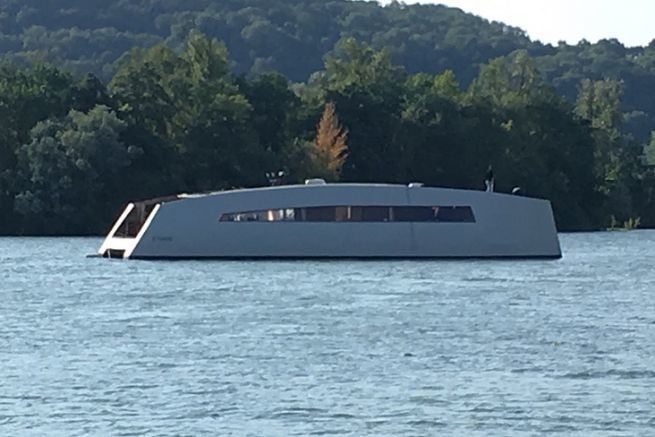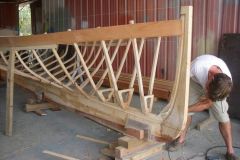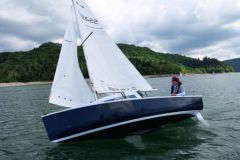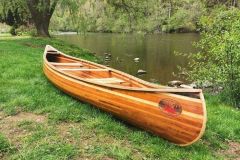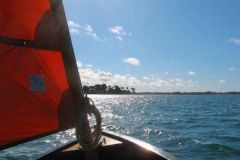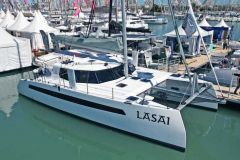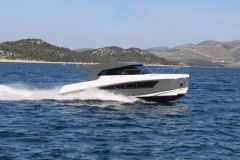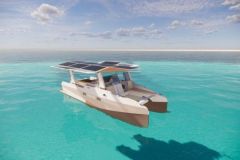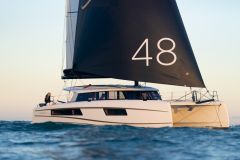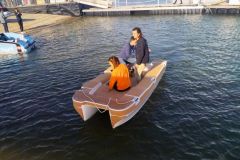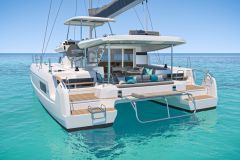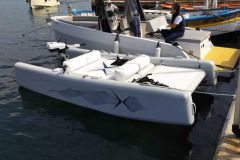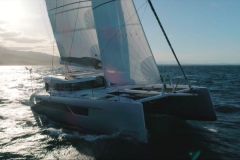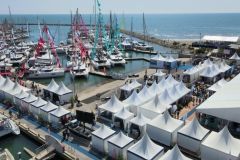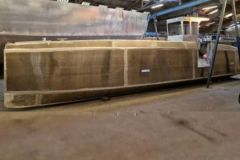José is a computer scientist. He works in large groups with incremental work methods. This type of approach does not give a definitive vision of things, but allows to launch projects quickly and to make them evolve along the way. This is how he approached the construction of his catamaran Coalescence.
Limiting its environmental impact
The story begins with a political awareness. When he moves with his family to the Paris region for professional reasons, he comes up against the problem of housing: rare and expensive, which forces him to go into debt or to move to a distant suburb. He then tried to fit out a barge, but realized that the hold of a Freycinet was not suitable for living in.
He then decides to build his own boat which will be 100% ecological, autonomous and clean. He then writes a quick specification taking into account the expectations of his wife who for irrational reasons does not want to live "under water". So he imagined a catamaran whose living quarters would be on the nacelle above the water level.
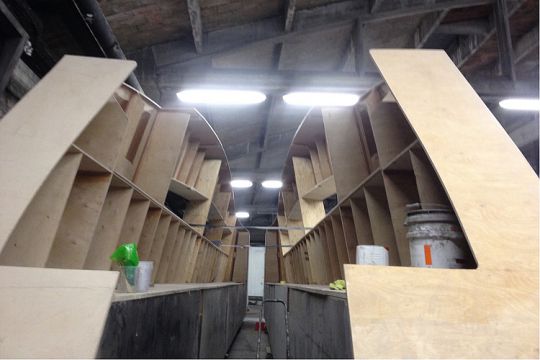
We raise the sleeves
José then approached a design office and a naval architect to imagine his project. But his way of thinking does not fit at all with this type of structure. In the end, it was on his own that he read up on boat building. Then he started to work. On the advice he got here and there, he read that the construction site should not be far from the house, otherwise the project would quickly fail. He rented a garage 10 minutes away from his house and started to build pieces of hull 4.60 m long! Simply to be able to build them in the garageeuros The construction is out of wood for reasons of ease of implementation. The submerged section is made of epoxy marine plywood. He then uses technical wood from the building industry for the rest of the boat.
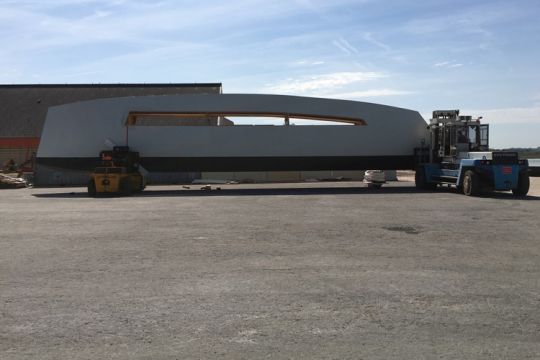
How to assemble 2 hulls of 23 m ?
He found himself with more than 10 pieces of hull that he assembled in Dieppe, France, in an old shipyard. Here he is with 2 hulls of 23 m long that now have to be joined together (the boat is 8.60 m wide).
It uses the technique of wooden caissons which form beams that fit into the hulls. There are 6 beams for the whole boat. If these beams are easy to fit into one hull, presenting the second is much more difficult. Moving a 23 m long piece is more delicate. He calls on the dockers with forklifts that cost him 400 euros an hour and can't manage to have enough precision to place the hull. He finally managed to use an ancestral method dating back to ancient Egypt. A few broomsticks placed under the hull allow to roll it and to place it with precision. Investment: 15 euros!

120 m2 living space
It now remains to lay out the facilities. Between the hulls, a large floor of 120 m2 is 70 cm above the water level. In the center, a 10 m2 patio that provides light even allows for a vegetable garden and to enjoy the outdoors sheltered from the wind. At the rear, a terrace the full width of the boat by 4 m also forms a beautiful balcony.
An electric motorization
For its displacement, this catamaran is autonomous with 2 electric motors mounted on shaft lines. Batteries of forklift truck come to feed the engines. They are also used to provide electricity for life on board. José imagined his autonomy according to his navigation program: 10 months/year he stays at the quay. The catamaran is his home and he needs to provide electricity for his refrigerator, lighting and other domestic needs.
The rest of the time, it sails on the waterways. In this case, the batteries give 2 hours of autonomy to the engines to move the 40 tons of the catamaran. According to José, this is enough to cover 15 km before connecting to the electrical network and recharging the batteries at the lock.
Today, 20 solar panels cover part of the boat's roof. But José would like to double this surface to gain even more capacity and reach complete autonomy when the boat is not sailing (about 10 KW per day).
No helm station on Coalescence, but a movable box that plugs into a socket. Potentiometers control the electric motors. Once at the quay, the box is put away in a cupboard to avoid seeing the steering station.
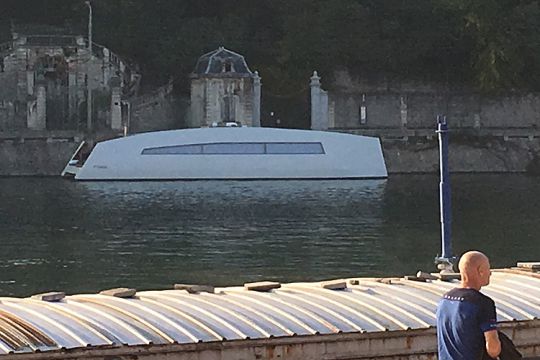
10 years of construction
When asked about the time he spent building this unlikely catamaran, Jose is rather unspecific: "It's 10 of work, a bit like if I had invested in renovating an old house." But it's mostly a work in progress. Moreover, he will not show photos of the interior, as he believes that the finishing touches are not yet complete.
But for all that, this man is not satisfied: "Coalescence is a kind of prototype. I still have a lot of ideas that I would like to apply to a future model
